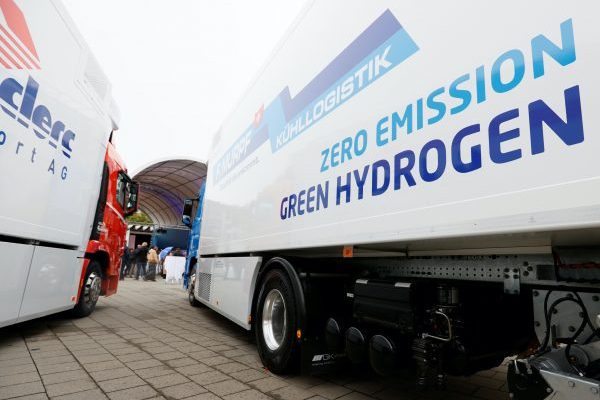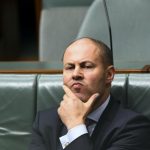Fixing Australia’s energy strategy through green hydrogen

The Australian federal government’s energy strategy may be in shambles, but there is hope in the states and territories. Many have announced net zero emissions targets, and some have also launched renewables-produced hydrogen initiatives for domestic use and exports. This has the potential to make Australia a renewable energy superpower.
Australian commodity exports have helped fuel the large manufacturing-based economies of China, Japan and South Korea. Now that these countries have committed to transitioning away from fossil fuels, this trade is in jeopardy. Liquefied natural gas (LNG) exports may briefly increase while it acts as a ‘bridging fuel’, but the commitment to net zero emissions by 2050–2060 means this too has an expiry date.
While Australia’s fossil fuel exports will come to an end, a new opportunity is emerging in the form of green hydrogen, with many key trade partners, such as South Korea, announcing their interest in a hydrogen economy.
The advantage of Australian-produced green hydrogen is that it allows the ‘bottling of Australian sunshine’. This addresses the problem of the intermittency of renewables and can help decarbonise the transport sector. With strong encouragement from trade partners, Australia’s potential to supply cheap, abundant and high-quality green hydrogen is breathtaking.
Western Australia (WA), the commodities exporting heartland of the country, cannot afford to hesitate. Being so heavily dependent on fossil fuel exports, any change in the appetites of East Asian buyers has immediate repercussions for WA businesses and government — and in turn for all of Australia.
Here the Western Australian Renewable Hydrogen Strategy, launched July 2019, comes into play. The state government is setting out an ambitious plan to coordinate the establishment of domestic production capabilities for green hydrogen.
The idea is to leverage the state’s existing comparative advantages — an abundance of renewable energy resources, swathes of unused land and advanced export infrastructure — to scale-up the production and export of green hydrogen. These efforts form a large chunk of the thinking behind the federal government’s 2019 National Hydrogen Strategy, released four months later.
The WA government is not just replacing one commodity with another. Efforts to secure markets for domestic companies and the Future Battery Industry Strategy will help nurture a high-tech manufacturing industry, producing electrolysers, hydrogen storage and transportation solutions, solar PV modules and grid-disconnected microgrids.
The WA strategy has four focus areas: capturing a share of the global market for green hydrogen similar to WA’s share in LNG exports, reducing the reliance on diesel in remote communities and industries, partially decarbonising the state’s gas sector and accelerating the use of fuel-cell electric vehicles.
As part of its COVID-19 economic recovery plan, the WA government has invested AU$22 million (US$16.5 million) into nine green hydrogen initiatives. The state has also provided environmental approval for the first stage of the Asian Renewable Energy Hub (AREH) in the Pilbara region. The AREH will be the largest of its kind in the world, a project targeted at generating 26,000 megawatts from wind and solar to produce green hydrogen and ammonia for domestic use and export.
Investing in Australian green hydrogen is not without risk, but the risk is not insurmountable. Some question whether it can compete with cheaper fossil fuel-derived hydrogen, or other renewable energy sources with rapidly falling prices.
But a recent article in Nature Energy argued that green hydrogen could reach price parity with fossil fuels by 2030. While it is unclear how hydrogen will compete with other renewable technologies such as batteries, it is likely to play a role in sectors where electrification remains challenging.
Australian hydrogen might help address the scarcity of land and natural resources in Northeast Asia, and the scaling-up of new clean energy projects like offshore wind and domestic production of green hydrogen may become another way of addressing energy security concerns. There are also technological challenges involved in storing and transporting hydrogen via ocean-going ships, though research in this area is currently being undertaken.
The political challenges may prove more troublesome. Australian Prime Minister Scott Morrison’s ‘gas-led recovery’ and promotion of fossil fuel-derived hydrogen will divert resources away from new green industries, potentially quashing Australia’s lead in the global green energy race. One of the country’s largest producers of natural gas, Woodside Energy, is investing in ‘blue hydrogen’, produced from natural gas, as well as green hydrogen projects.
The Australian federal government’s actions might compromise export opportunities to Northeast Asia, since imported hydrogen will need to be certified as ‘green’. It could also obstruct the security of the domestic market for Australia’s green hydrogen manufacturers and producers.
For now, the WA government, the business community and technology experts are charging on, keenly aware that any hesitancy on their part will jeopardise the early gains Australia has made in the global green hydrogen race.
It is time the federal government ditches its ideology of ‘technology neutrality’ and throws all its weight behind where real money is to be made in the near future — green hydrogen. This could help drive down costs of production and create market certainty for the major players in the Australian green hydrogen value chain, including WA’s major energy producers.
This article was published by The East Asia Forum.
Sung-Young Kim is Senior Lecturer of Politics and International Relations at Macquarie University. He currently leads a project on ‘The Sources of Competitive Advantage in Exporting Green Energy Systems’, which examines why, what and how governments and corporations are promoting smart grids.













